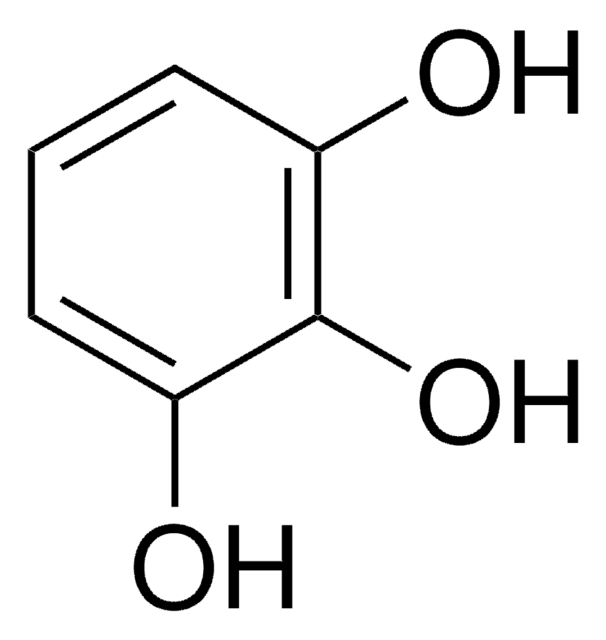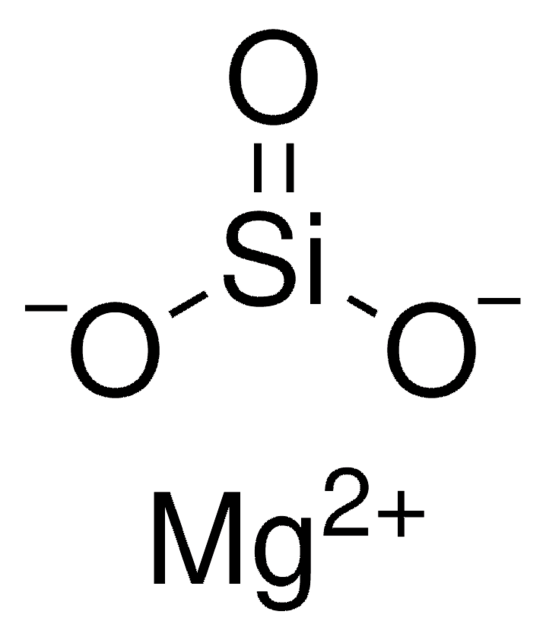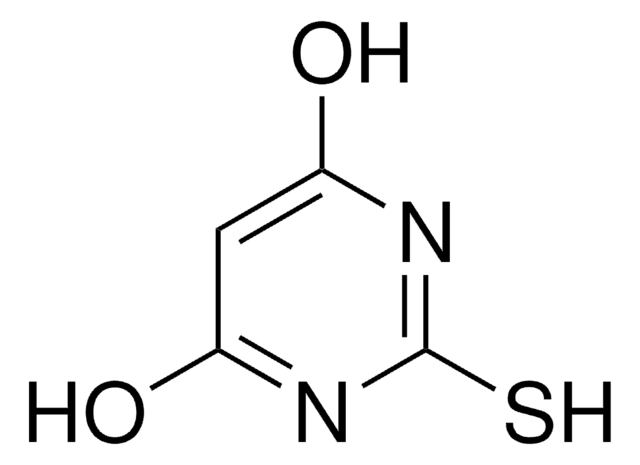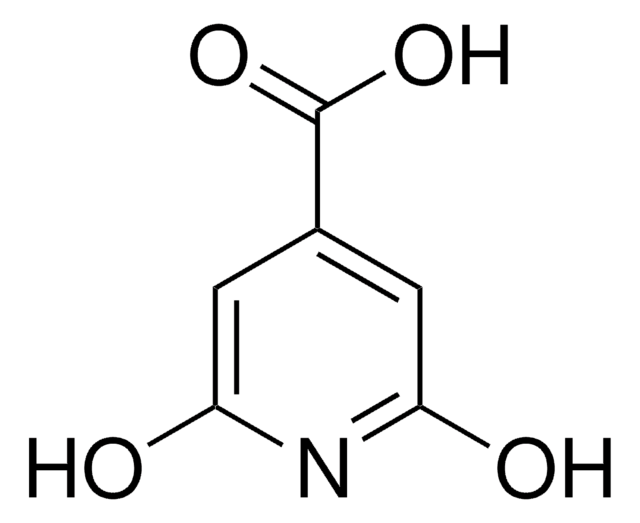Key Documents
16040
Pyrogallol
ACS reagent, ≥99%
Synonim(y):
1,2,3-Trihydroxybenzene, 2,3-Dihydroxyphenol, Pyrogallic acid
About This Item
Polecane produkty
klasa czystości
ACS reagent
gęstość pary
4.4 (vs air)
ciśnienie pary
10 mmHg ( 167.7 °C)
Próba
≥99%
Postać
solid
metody
HPLC: suitable
pozostałość po prażeniu
≤0.005% (as SO4)
tw
309 °C (lit.)
mp
131.0-135.0 °C
133-134 °C (lit.)
rozpuszczalność
water: soluble
ślady anionów
chloride (Cl-): ≤10 mg/kg
sulfate (SO42-): ≤50 mg/kg
ślady kationów
Fe: ≤0.001%
heavy metals (as Pb): ≤0.0005%
Zastosowanie
pharmaceutical (small molecule)
ciąg SMILES
Oc1cccc(O)c1O
InChI
1S/C6H6O3/c7-4-2-1-3-5(8)6(4)9/h1-3,7-9H
Klucz InChI
WQGWDDDVZFFDIG-UHFFFAOYSA-N
Szukasz podobnych produktów? Odwiedź Przewodnik dotyczący porównywania produktów
Zastosowanie
Działania biochem./fizjol.
Hasło ostrzegawcze
Warning
Zwroty wskazujące rodzaj zagrożenia
Zwroty wskazujące środki ostrożności
Klasyfikacja zagrożeń
Acute Tox. 4 Dermal - Acute Tox. 4 Inhalation - Acute Tox. 4 Oral - Aquatic Chronic 3 - Muta. 2
Kod klasy składowania
11 - Combustible Solids
Klasa zagrożenia wodnego (WGK)
WGK 2
Temperatura zapłonu (°F)
Not applicable
Temperatura zapłonu (°C)
Not applicable
Środki ochrony indywidualnej
dust mask type N95 (US), Eyeshields, Faceshields, Gloves, type P3 (EN 143) respirator cartridges
Certyfikaty analizy (CoA)
Poszukaj Certyfikaty analizy (CoA), wpisując numer partii/serii produktów. Numery serii i partii można znaleźć na etykiecie produktu po słowach „seria” lub „partia”.
Masz już ten produkt?
Dokumenty związane z niedawno zakupionymi produktami zostały zamieszczone w Bibliotece dokumentów.
Klienci oglądali również te produkty
Nasz zespół naukowców ma doświadczenie we wszystkich obszarach badań, w tym w naukach przyrodniczych, materiałoznawstwie, syntezie chemicznej, chromatografii, analityce i wielu innych dziedzinach.
Skontaktuj się z zespołem ds. pomocy technicznej











